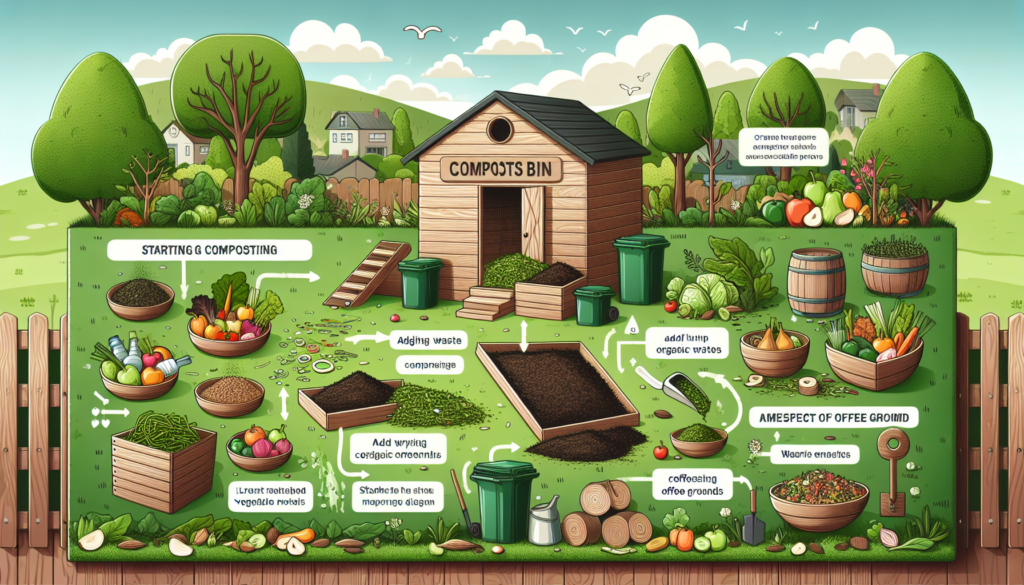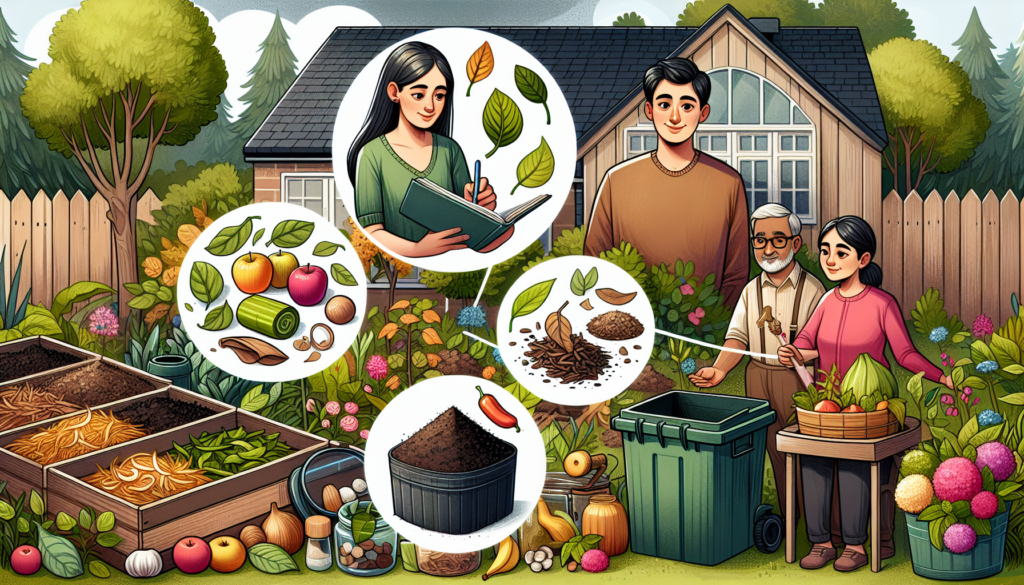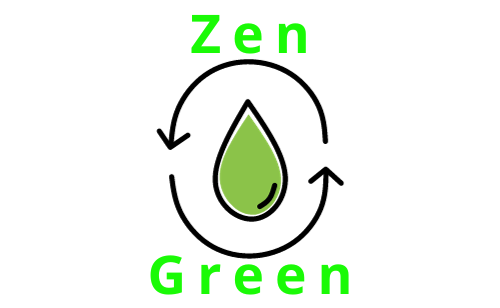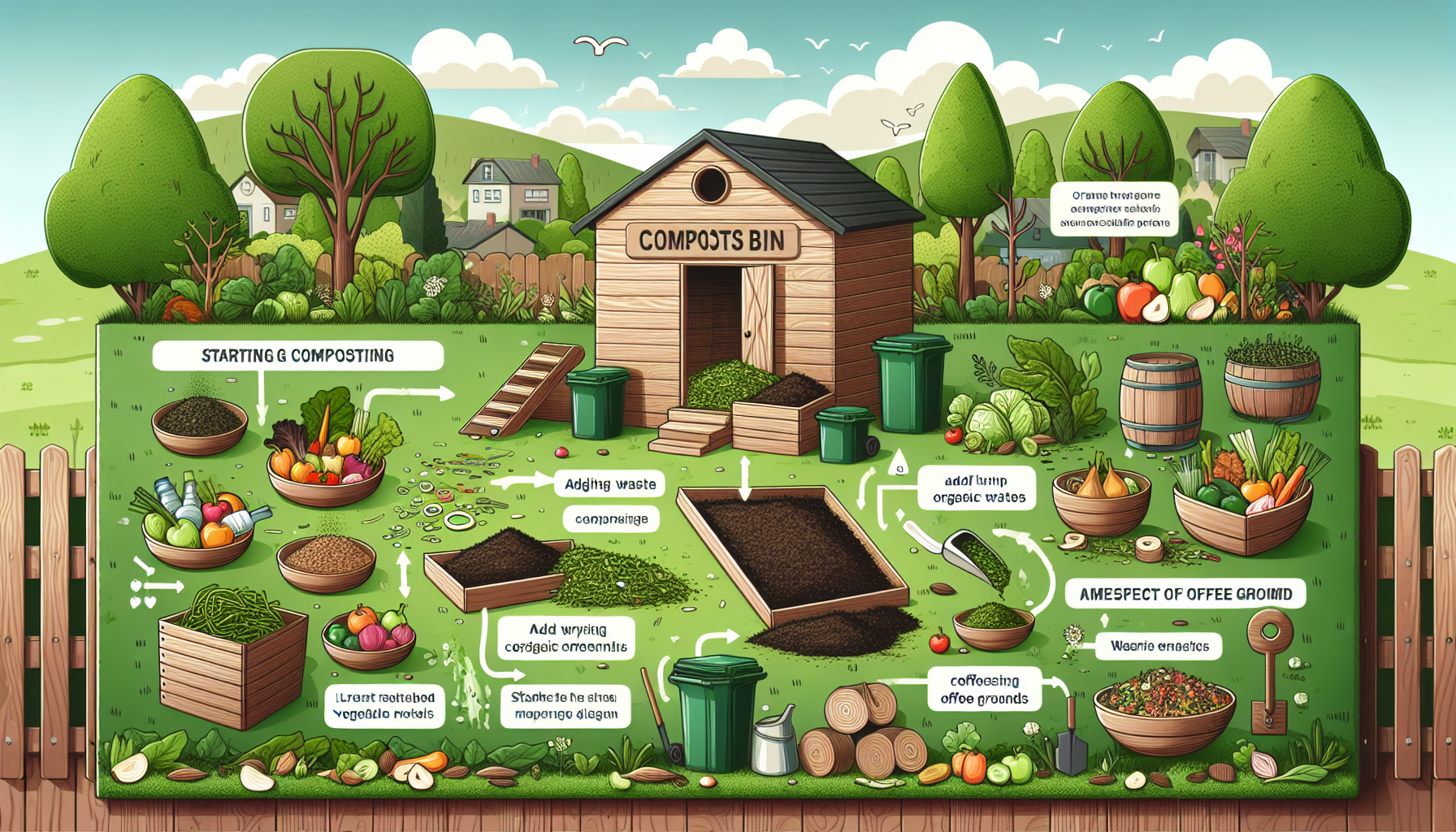Thinking about starting your own composting system at home? Look no further! This comprehensive guide will take you through the step-by-step process of composting, helping you create nutrient-rich soil for your garden while reducing waste. From choosing the right composting method to understanding what materials to use, we’ve got you covered. Whether you’re a seasoned gardener or just getting started, this friendly guide will make composting a breeze. Get ready to turn your kitchen scraps and yard waste into black gold for your plants!
Types of Composting Systems
Traditional Composting
Traditional composting is the most common and well-known method of composting. It involves the decomposition of organic materials, such as kitchen scraps and yard waste, in an outdoor pile or bin. With this method, microorganisms break down the materials over time, turning them into nutrient-rich humus – the end product of the composting process. Traditional composting requires regular maintenance, such as turning the pile and monitoring moisture levels.
Vermicomposting
Vermicomposting, also known as worm composting, is a method that utilizes worms to break down organic matter. Redworms, specifically Eisenia fetida or red wigglers, are the most commonly used worms for vermicomposting. These worms consume the organic waste, digest it, and excrete nutrient-rich castings, which can be used as fertilizer. Vermicomposting is a great option for those with limited outdoor space or who live in urban areas. It is relatively low maintenance and produces high-quality compost.
Bokashi Composting
Bokashi composting is a unique method that involves fermenting organic waste using beneficial microbes. This anaerobic process takes place in an airtight container, such as a bucket, and requires the use of a specialized bran inoculated with bacteria. The bran is sprinkled on the waste, which then ferments over time. Bokashi composting can handle a wider range of materials than traditional composting, including meat, dairy, and cooked food waste. It is a great option for those who want to compost a variety of materials in a small space.
Trench Composting
Trench composting, also known as trenching, is a simple and efficient method of composting. With this method, organic waste is buried directly in the garden or flower bed. A trench is dug, and the waste is added and covered with soil. Over time, the waste decomposes and enriches the soil. Trench composting is particularly useful for disposing of kitchen scraps quickly and conveniently. It also improves soil quality and reduces the need for traditional composting bins or piles.
Choosing a Composting Method
Considerations for Traditional Composting
When choosing the traditional composting method, there are a few factors to consider. First, assess the amount of waste you have and how much space you can allocate for a compost pile or bin. Traditional composting requires enough space for the pile to decompose properly. Additionally, consider the climate in your area, as extremes in temperature or rainfall can affect the composting process. Traditional composting also requires regular turning and attention to moisture levels.
Factors to Consider for Vermicomposting
Vermicomposting requires a different set of considerations. Firstly, determine the amount of organic waste you generate as vermiculture bins are smaller in size. Redworms need adequate space, proper bedding material, and a suitable environment to thrive. Consider the temperature and moisture levels in your home, as extreme fluctuations can be harmful to the worms. Also, keep in mind that vermicomposting may produce a small amount of odor, which can be managed with proper maintenance.
Benefits of Bokashi Composting
Bokashi composting offers several benefits, making it an attractive choice for many. Unlike traditional composting or vermicomposting, it can handle nearly all types of organic waste, including meat, fish, and dairy products. This method also allows for composting in a small, enclosed space, making it ideal for those with limited outdoor or indoor space. Bokashi composting also produces a nutrient-rich liquid called bokashi tea, which can be used as a natural fertilizer.
How to Decide on Trench Composting
If you’re looking for a simple and convenient method, trench composting might be the right choice for you. Consider the layout of your garden or flower bed and identify areas where you can dig trenches. Take into account the types of plants you have and their nutrient requirements, as trench composting can help directly deliver nutrients to the plants. Additionally, evaluate the amount of kitchen waste you have and whether or not trench composting can handle it effectively.

Location and Setup
Choosing the Perfect Spot
The location of your composting system is crucial for its success. For traditional composting, choose a spot that is easily accessible, receives adequate sunlight, and is close to a water source. Avoid placing the compost pile near trees or structures that could hinder airflow. For vermicomposting, find a suitable spot indoors where room temperature and moisture levels are consistent. Bokashi composting can be done in a small, enclosed space like a garage or pantry. Trench composting is done directly in the garden, so choose a location that is convenient for burying waste.
Container Options for Traditional Composting
Traditional composting can be done in a compost pile or a compost bin. Compost piles are an open option that requires more space but allows for easy turning and mixing. Compost bins come in various sizes and styles, offering more control over the composting process. Choose a container that suits your needs and available space. Consider factors such as ventilation, drainage, and ease of access for turning the compost.
Setting Up a Worm Bin for Vermicomposting
Setting up a worm bin for vermicomposting doesn’t require much space and can be done indoors. Choose a container that is shallow and has drainage holes for excess moisture. Line the bottom with a breathable material like shredded newspaper or cardboard. Add bedding material such as dampened shredded paper or coconut coir. Then, introduce the redworms and provide them with a consistent supply of organic waste. Maintain the moisture level by spraying water as needed.
Materials for Bokashi Composting
For bokashi composting, you will need an airtight container, such as a bucket with a tight-fitting lid. The container should be large enough to hold the organic waste you generate. You will also need a bran inoculated with beneficial bacteria. This bran is sprinkled on the waste to facilitate the fermentation process. Additionally, a drainage tap or system is necessary to collect the nutrient-rich bokashi tea that is produced during the composting process.
Preparing the Trench for Trench Composting
Trench composting requires digging a trench in your garden or flower bed. The trench should be about 8-12 inches deep, allowing enough space for organic waste to decompose. Ensure that the trench is at a suitable distance from the plants you wish to benefit from the compost. Before adding waste, loosen the soil at the bottom of the trench with a garden fork to facilitate decomposition.
What to Compost
Green/Brown Ratio
Composting successfully requires maintaining a proper balance between green (nitrogen-rich) and brown (carbon-rich) materials. The ideal ratio for composting is roughly 3 parts brown materials to 1 part green materials. Achieving this balance ensures that the composting process is efficient and that the end product is nutrient-rich.
Acceptable Green Materials
Green materials are typically nitrogen-rich and provide moisture to the compost pile. These include kitchen scraps such as fruit and vegetable peels, coffee grounds, tea bags, and grass clippings. Other green materials include plant trimmings, weeds (without seeds), and fresh manure from herbivores. Be sure to chop or shred larger items to facilitate decomposition.
Acceptable Brown Materials
Brown materials are carbon-rich and help provide structure to the compost pile. These include dry leaves, straw, wood chips or sawdust, shredded newspaper, and cardboard. Avoid using glossy or colored paper as they may contain harmful chemicals. Brown materials can be collected throughout the year and stored in a dry place until needed.
Items to Avoid Composting
Certain items should never be added to a compost pile, as they can either attract pests, introduce harmful substances, or hinder the composting process. Avoid composting meat, fish, dairy products, oils, fats, dog or cat waste, and any plants that have been treated with herbicides or pesticides. Additionally, steer clear of invasive weeds or plants that could spread through the compost.

Maintaining the Compost Pile
Turning and Mixing
To ensure that the composting process proceeds efficiently, it is important to regularly turn and mix the compost pile. Turning the pile introduces oxygen, speeds up decomposition, and helps prevent foul odors. Use a garden fork or compost aerator to thoroughly mix the material, breaking up any clumps or compacted areas. Aim to turn the pile every few weeks or whenever the temperature rises above 140°F (60°C).
Moisture Levels
Proper moisture levels are key to successful composting. The compost pile should be moist, but not too wet or too dry. Aim for a damp sponge-like consistency. If the pile is too dry, add water while turning the materials. If it’s too wet, add dry brown materials and increase aeration. Monitor the moisture levels regularly, especially during dry or rainy periods, and make adjustments as necessary.
Temperature Considerations
Composting is a biological process that generates heat. The internal temperature of the compost pile can rise to levels between 120°F (49°C) and 160°F (71°C). This heat is essential for breaking down the organic materials and killing off weed seeds and pathogens. However, extreme temperatures can impact the composting process. If the pile becomes too hot, it may need to be turned more frequently or moistened to dissipate the heat.
Addressing Compost Odors
Compost should have an earthy smell as it’s decomposing, but strong, foul odors are a sign of an imbalanced or improperly maintained compost pile. To prevent and address compost odors, ensure that the pile has proper air circulation and is not too wet. Avoid adding meat, fish, or dairy products, as these are prone to creating offensive smells. Aerating and turning the pile regularly, along with proper moisture management, will help keep odors to a minimum.
Troubleshooting Common Composting Issues
The Compost is Too Wet
Excessive moisture in the compost pile can lead to anaerobic conditions, unpleasant odors, and the growth of unwanted bacteria. To resolve this issue, add dry brown materials, such as shredded newspaper or dry leaves, to absorb the excess moisture. Turn the pile to promote airflow and help dry out the materials. Additionally, consider covering the pile during rainy periods to prevent further saturation.
The Compost is Too Dry
If the compost pile is too dry, it can slow down the decomposition process. To address this, water the pile while turning and mixing the materials. Moisten the compost gradually, ensuring that it reaches the desired consistency. Use a garden hose or a watering can to add water, focusing on dry or compacted areas. Covering the pile with a tarp or compost cover can help retain moisture during dry periods.
Pests and Critters
Compost piles can attract pests and critters, especially if meat, dairy, or other food waste is present. To deter pests and critters, avoid adding these types of materials to the compost pile. Consider covering the pile with a secure lid or wire mesh to prevent access. Additionally, bury food waste deeper in the pile to discourage foraging animals. If pests become a persistent issue, consider using compost bins or vermin-proof composters.
Slow or No Decomposition
If your compost pile is not decomposing as expected or is decomposing at a slow rate, several factors may be at play. Check the green/brown ratio – an imbalance can hinder the decomposition process. Ensure that the pile has enough moisture by performing a squeeze test. If it’s too dry, water it. If it’s too wet, add dry materials and turn the pile to improve aeration. Lastly, consider the temperature of the compost pile, as extreme temperatures can slow down decomposition.
Harvesting and Using the Compost
Recognizing Finished Compost
Finished compost resembles dark, crumbly soil and has a pleasant earthy smell. It should no longer be recognizable as the original materials. The composting process generally takes several months to a year, depending on the method used and environmental factors. To test if the compost is finished, perform a germination test by planting a batch of seeds in a small amount of compost. If the seeds germinate and grow well, the compost is ready to use.
Sifting and Storing Compost
Before using the compost, you may want to sift out any larger chunks or uncomposted materials. Use a compost sifter or make one by stretching wire mesh over a wooden frame. This will result in a finer, more uniform compost. Store the sifted compost in a breathable container, such as a plastic bin with ventilation holes, until you are ready to use it. Avoid storing compost in a sealed bag or container, as it can become anaerobic.
Applying Compost in Your Garden
Compost is a valuable addition to any garden, improving soil structure and providing essential nutrients to plants. Apply 1-2 inches of compost to the topsoil of your garden beds or around individual plants. Gently work the compost into the soil using a garden fork or rake. Avoid piling the compost against plant stems or trunks. The compost will gradually break down, enriching the soil and promoting healthy plant growth.
Using Compost for Houseplants
Compost can also be used indoors to nourish your houseplants. Mix compost with potting soil in a ratio of approximately 1:3 or 1:4. This will provide the plants with essential nutrients and improve moisture retention. When repotting houseplants, add a layer of compost at the bottom of the pot to benefit the plant’s roots. Avoid using pure compost as it may retain too much moisture and lead to root rot.
Troubleshooting Worm Composting
Overfeeding the Worms
Feeding worms too much food waste at once can overwhelm their digestive system and cause issues in the worm bin. To avoid overfeeding, gradually introduce small amounts of food waste. Observe how quickly the worms consume the food and adjust the feeding accordingly. If odors or excess moisture are present, reduce the amount of food being added. Remember that worms can consume approximately their own weight in food scraps per day.
Worm Bin has Unpleasant Odors
Unpleasant odors in a worm bin typically indicate an issue with excess moisture or the presence of anaerobic conditions. Check the moisture level of the bedding and remove any excess liquid. Increase aeration by gently fluffing the bedding and adding carbon-rich materials such as shredded newspaper or dry leaves. Avoid adding food waste that is too wet or acidic. Properly maintaining the moisture level and turning the bedding regularly will help eliminate odor issues.
Pest Problems in the Worm Bin
Occasionally, pests such as fruit flies or mites may infest a worm bin. To prevent these pests, bury food waste deep within the bedding, as they are attracted to exposed organic matter. Keep the bin closed securely at all times to prevent access. If pests are present, stop feeding the worms temporarily and focus on maintaining optimum conditions in the bin. Increase aeration, ensure proper moisture levels, and remove any decaying or rotting materials.
Worms Trying to Escape
Worms may attempt to escape their bin due to unfavorable conditions. Check the moisture level – if the bin is too wet or too dry, the worms may become stressed. Adjust the moisture level by adding or removing bedding as needed. Pay attention to the temperature, as extreme heat or cold can also prompt worms to seek better conditions. If the bedding is compacted, gently fluff it with a garden fork or add more bedding to provide a loose, suitable environment for the worms.
Benefits of Composting
Reducing Food Waste
One of the main benefits of composting is its ability to significantly reduce food waste. By diverting organic materials from the landfill, you not only save space but also prevent the production of methane – a potent greenhouse gas that contributes to climate change. Composting transforms food scraps into valuable resources for your garden or houseplants, closing the loop and minimizing waste.
Improving Soil Quality
Compost acts as a natural soil conditioner, improving soil structure and fertility. It enhances the soil’s ability to retain moisture, reducing the need for excessive watering. Compost also adds beneficial microorganisms to the soil, which aid in breaking down organic matter and making nutrients available to plants. By adding compost to your garden or flower beds, you can promote healthy plant growth and create a thriving ecosystem underground.
Encouraging Beneficial Soil Organisms
Composting supports a diverse community of soil organisms, including earthworms, bacteria, fungi, and other microorganisms. These organisms break down organic matter, releasing nutrients and creating a healthy soil environment. Earthworms, in particular, are nature’s ultimate recyclers, turning organic waste into nutrient-rich castings that benefit plants. By providing compost, you attract and nurture these beneficial soil organisms, enhancing the overall health of your garden.
Reducing Chemical Fertilizer Use
Using compost in your garden reduces the need for synthetic fertilizers. Chemical fertilizers can have negative effects on soil health and water quality, as they often contain high levels of nitrogen, phosphorus, and potassium. Compost, on the other hand, slowly releases nutrients and supports long-term soil fertility. By reducing reliance on chemical fertilizers, you contribute to a more sustainable and environmentally friendly gardening practice.
Conclusion
Composting is a rewarding and environmentally conscious way to manage organic waste. Whether you choose traditional composting, vermicomposting, bokashi composting, or trench composting, each method has its own advantages and considerations. Select a composting method that aligns with your available space, kitchen waste output, and personal preferences. By following the proper setup, maintaining optimal conditions, troubleshooting any issues, and utilizing the finished compost, you can turn organic waste into a valuable resource for your garden or houseplants. Embrace the wonders of composting and take part in reducing waste and improving the health of your soil and plants. Happy composting!

